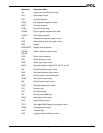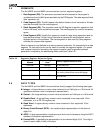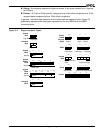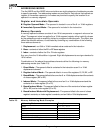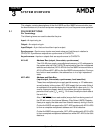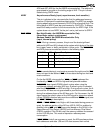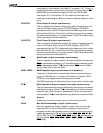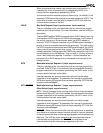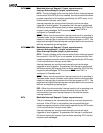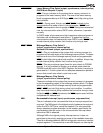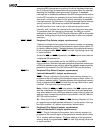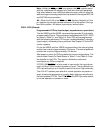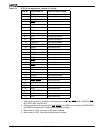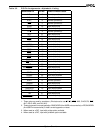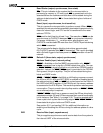
System Overview
3-5
When the external bus master has finished using the local bus, it
indicates this to the microcontroller by deasserting HOLD. The
microcontroller responds by deasserting HLDA.
If the microcontroller requires access to the bus (e.g., for refresh), it will
deassert HLDA before the external bus master deasserts HOLD. The
external bus master must be able to deassert HOLD and allow the
microcontroller access to the bus.
HOLD Bus Hold Request (input, synchronous, level-sensitive)
This pin indicates to the microcontroller that an external bus master
needs control of the local bus. For more information, see the HLDA pin
description.
The Am186ER and Am188ER microcontrollers’ HOLD latency time, the
time between HOLD request and HOLD acknowledge, is a function of
the activity occurring in the processor when the HOLD request is
received. A HOLD request is second only to DRAM refresh requests in
priority of activity requests received by the processor. This implies that
if a HOLD request is received just as a DMA transfer begins, the HOLD
latency can be as great as four bus cycles. This occurs if a DMA word
transfer operation is taking place (Am186ER microcontroller only) from
an odd address to an odd address. This is a total of 16 clock cycles or
more if wait states are required. In addition, if locked transfers are
performed, the HOLD latency time is increased by the length of the
locked transfer.
INT0 Maskable Interrupt Request 0 (input, asynchronous)
This pin indicates to the microcontroller that an interrupt request has
occurred. If the INT0 pin is not masked, the microcontroller transfers
program execution to the location specified by the INT0 vector in the
microcontroller interrupt vector table.
Interrupt requests are synchronized internally and can be edge-
triggered or level-triggered. To guarantee the interrupt is recognized,
the device issuing the request must continue asserting INT0 until the
request is acknowledged.
INT1/SELECT
Maskable Interrupt Request 1 (input, asynchronous)
Slave Select (input, asynchronous)
INT1—This pin indicates to the microcontroller that an interrupt request
has occurred. If the INT1 pin is not masked, the microcontroller transfers
program execution to the location specified by the INT1 vector in the
microcontroller interrupt vector table.
Interrupt requests are synchronized internally, and can be edge-
triggered or level-triggered. To guarantee the interrupt is recognized,
the device issuing the request must continue asserting INT1 until the
request is acknowledged.
SELECT
—When the microcontroller interrupt control unit is operating
as a slave to an external master interrupt controller, this pin indicates
to the microcontroller that an interrupt type appears on the address and
data bus. The INT0 pin must indicate to the microcontroller that an
interrupt has occurred before the SELECT
pin indicates to the
microcontroller that the interrupt type appears on the bus.



